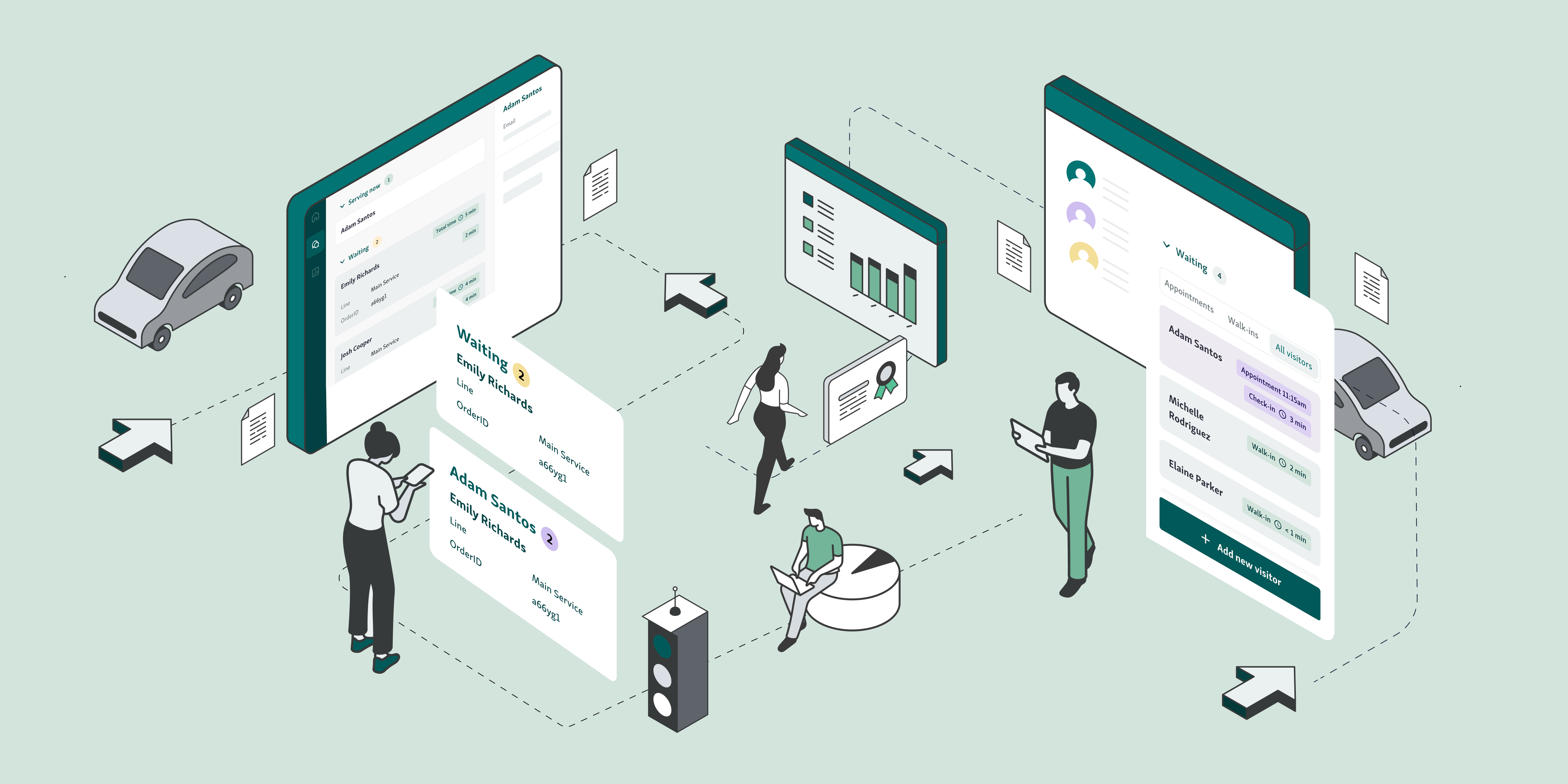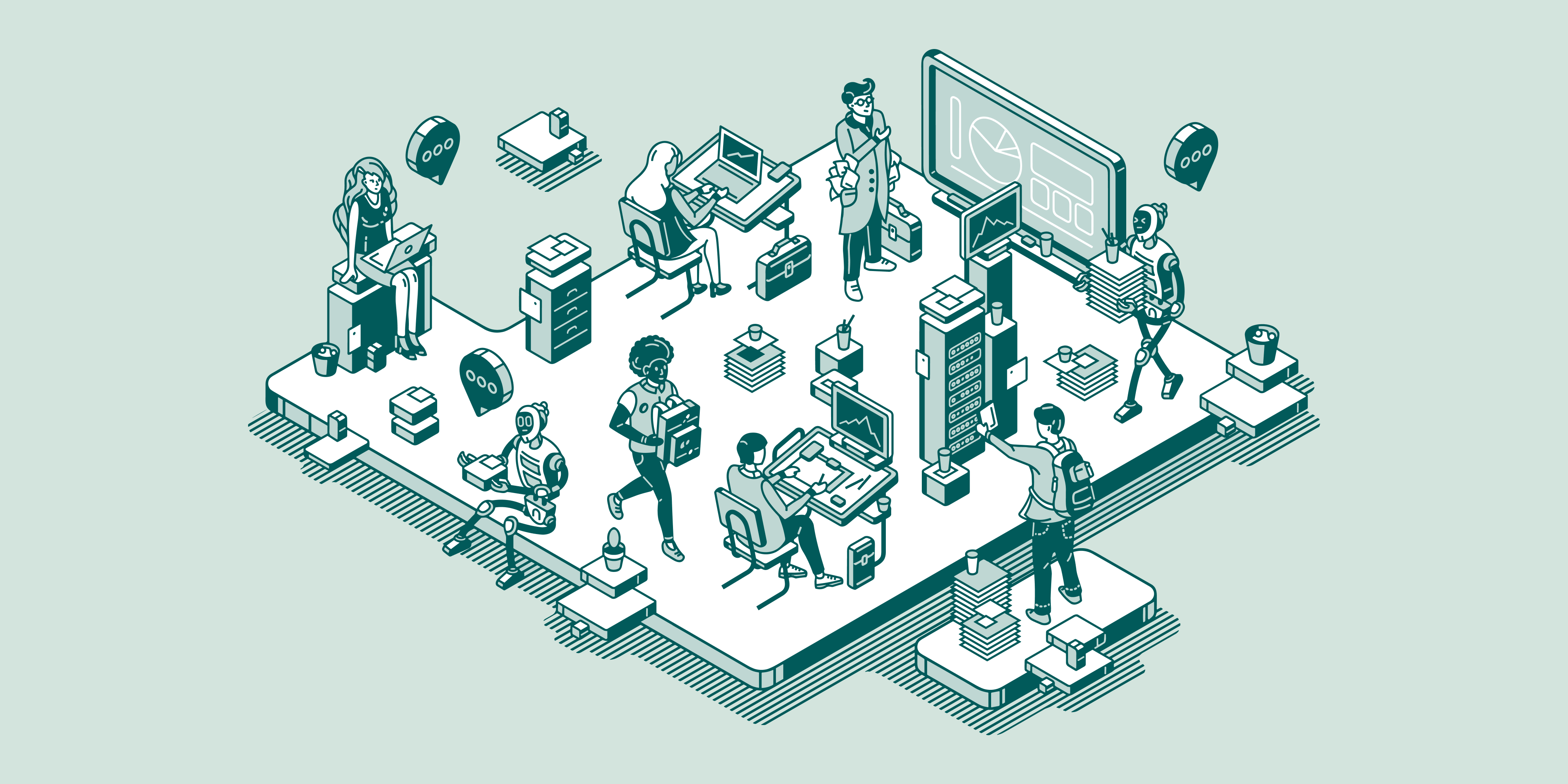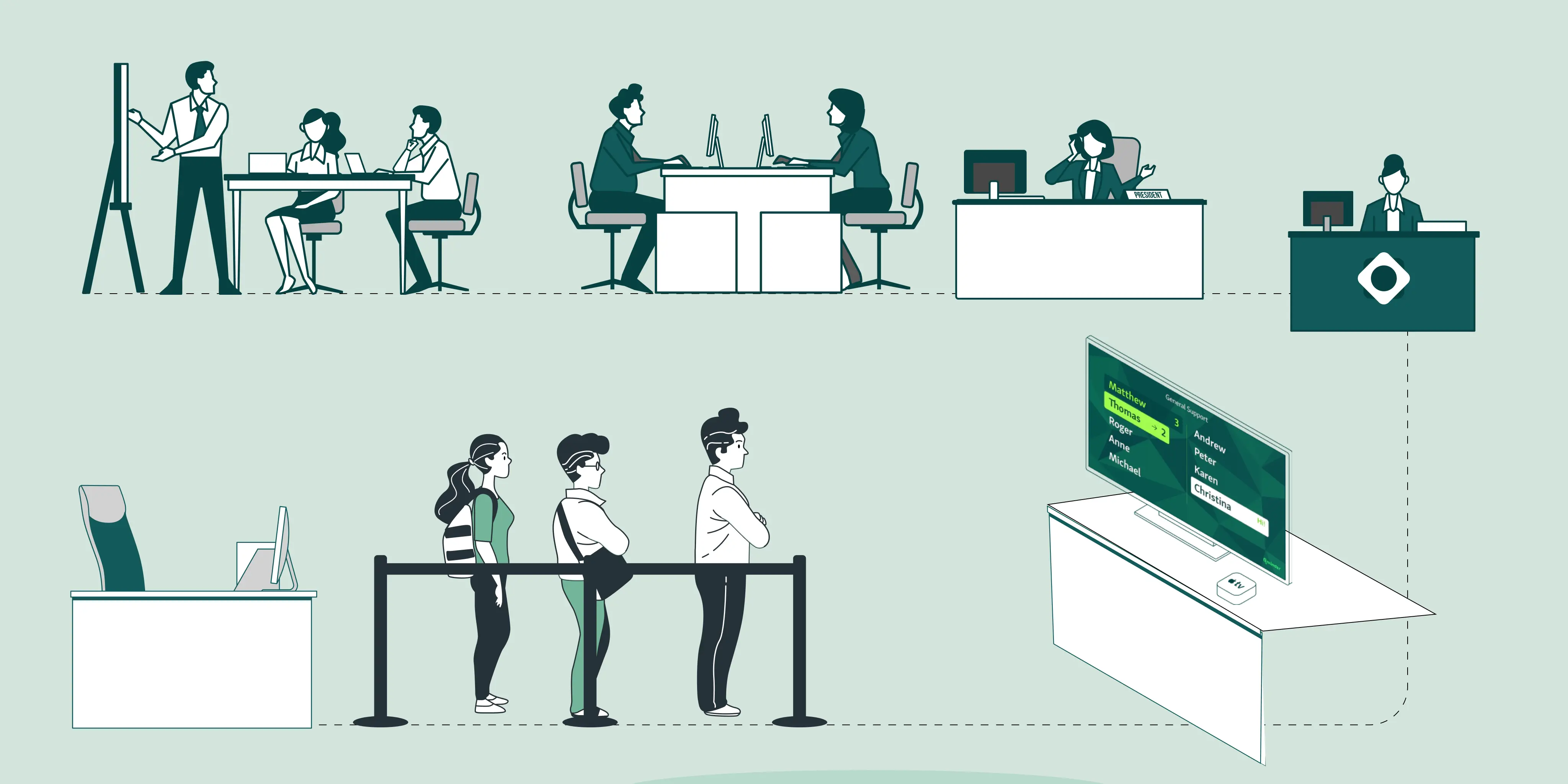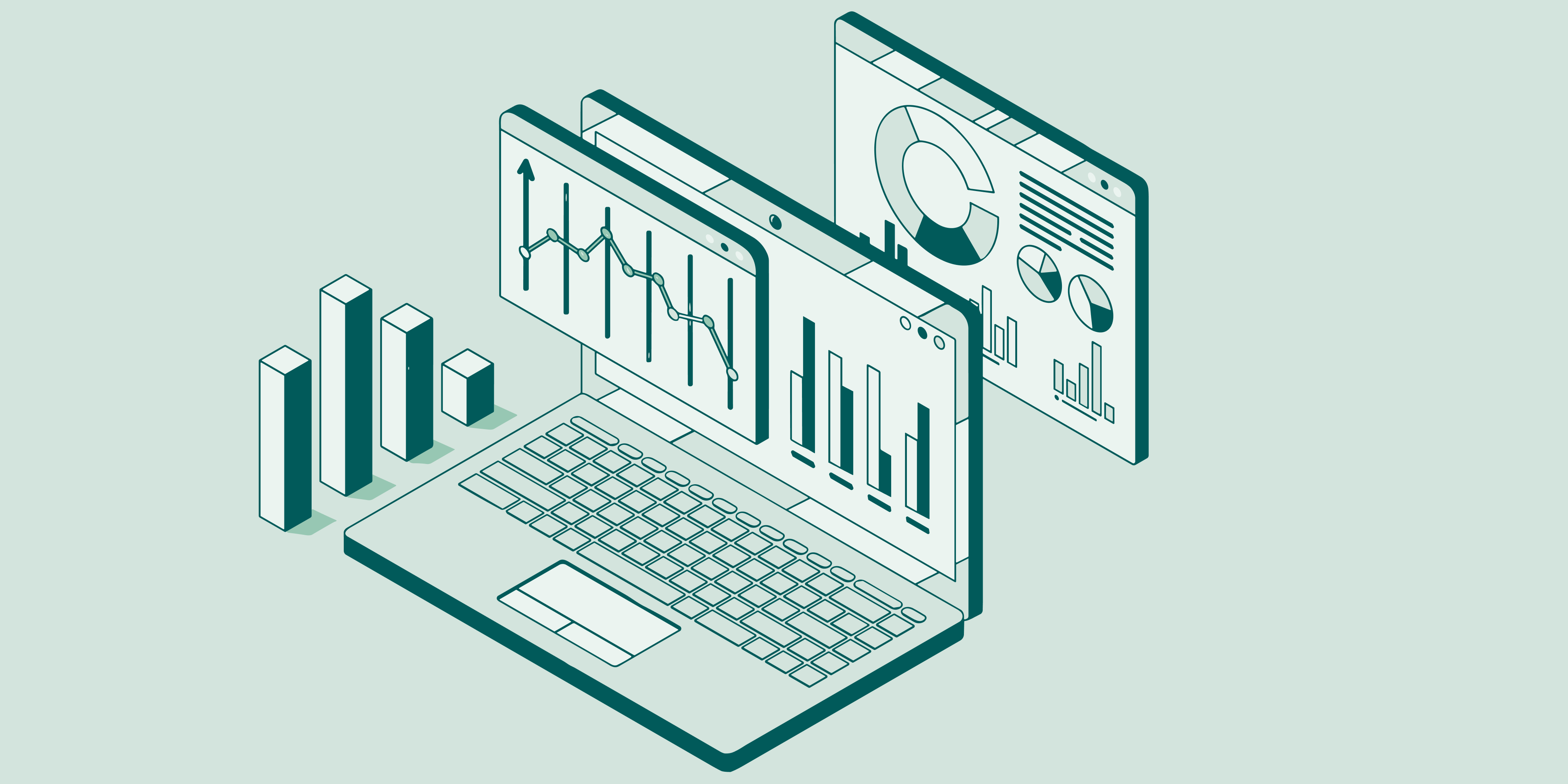Government agencies are under increasing pressure to improve service delivery and meet rising citizen expectations. Long wait times, inefficient processes, and lack of transparency often lead to frustration and decreased public trust.
According to a McKinsey report, citizen satisfaction with government services is 9 percentage points lower than with private-sector services. Poor customer experience (CX) in government can result in lower engagement, reduced compliance, and even negative public sentiment.
Enhancing CX in the public sector isn’t just about digital transformation—it’s about making services more accessible, efficient, and citizen-centric.
One key improvement is appointment scheduling, which helps reduce wait times, streamline operations, and ensure better service delivery.
In this blog, we’ll explore the importance of customer experience in the government sector, the challenges agencies face, and how solutions like government appointment scheduling can enhance service delivery and public satisfaction.
What Does Good Customer Experience Look Like in Government?
Unlike private businesses, government agencies don’t compete for customers—citizens have no alternative options when dealing with local, state, or federal offices. This makes it even more critical to ensure that government services are accessible, efficient, and user-friendly.
A well-designed government service should focus on these 4 pillars of great customer experience:
Ease of Access – Citizens should be able to access services through multiple channels, including online, mobile, and in-person options.
Efficiency – Government services should minimize delays and reduce unnecessary administrative hurdles.
Transparency – Clear communication about service processes, estimated wait times, and requirements builds public trust.
Personalization – Services should consider different citizen needs, ensuring that underserved populations, such as the elderly or people with disabilities, receive the support they need.
For example, DMVs in some states have reduced wait times by over 50% by implementing online appointment booking and self-service kiosks that allow citizens to complete tasks without standing in long lines.
Interesting read - Federal Agency Customer Experience Act: Key Insights & Impacts
Why Customer Experience in Government Matters More Than Ever
The importance of customer experience goes beyond smoother interactions—it directly shapes how citizens perceive and engage with their government.
1. The Trust Deficit: Poor Service Damages Public Confidence in Government
For many citizens, their only direct interaction with government agencies happens when they need essential services—such as renewing a driver’s license, registering a business, or applying for benefits. These interactions shape their overall perception of the government.
When these experiences are slow, frustrating, or inefficient, citizens lose confidence in their public institutions:
A study by Forrester Research found that government agencies rank last in CX across all industries.
A 2024 Pew Research survey found that only 22% of Americans trust the government to "do the right thing" most of the time.
Inconsistent service delivery creates frustration—if one government office provides excellent customer service while another is plagued with delays, citizens develop a negative perception of the entire system.
2. Compliance and Public Participation Increase When Government Services Are Easy to Use
Government initiatives—from voter registration to business licensing and tax compliance—only work if people participate. But when government processes are difficult, citizens are more likely to avoid or delay compliance.
How Poor CX Reduces Compliance:
Complicated tax filing leads to avoidance. Many taxpayers miss deadlines or underreport income simply because government tax portals are difficult to navigate.
Confusing regulations discourage business owners. Small businesses and entrepreneurs struggle with licensing processes, often delaying or forgoing compliance due to unclear instructions.
Tedious voter registration reduces civic engagement. When voter registration is manual and time-consuming, participation in elections declines.
3. Government Inefficiencies Overload Staff and Drain Resources
Poor customer experience in government doesn’t just frustrate citizens—it puts an enormous strain on government employees and wastes taxpayer dollars.
Every inefficiency leads to more manual work, longer backlogs, and higher administrative costs.
The Hidden Costs of Poor CX in Government:
Call center congestion: Many citizens call government hotlines for information that should be easily accessible online. As a result, government helplines are overwhelmed, leading to long wait times and increased operational costs.
Multiple in-person visits: If citizens don’t receive clear instructions on required documents, they end up visiting offices multiple times, clogging up government facilities and increasing service delays.
Incomplete or inaccurate applications: Poorly designed forms cause citizens to submit incorrect or missing information, forcing government employees to spend extra time reviewing and requesting corrections.
The Biggest Roadblocks to Improving CX in Government
Despite the clear good customer experience benefits, such as increased trust and efficiency, most government agencies struggle to implement meaningful changes due to several key challenges.
1. Bureaucracy Slows Everything Down
Unlike private companies that can quickly adopt new technologies, government agencies must navigate layers of approvals, compliance checks, and inter-agency coordination before implementing new solutions. This often leads to delays in digital transformation efforts.
2. Budget Constraints Limit Modernization Efforts
Government funding is often allocated to essential services first, leaving little room for investing in customer experience improvements. Many agencies operate on legacy systems that are decades old, making it difficult to introduce modern, user-friendly solutions.
3. Balancing Large-Scale Operations with Personalized Service
Unlike businesses that can offer tailored customer support, government agencies must handle millions of service requests while maintaining consistency. Striking a balance between efficiency and personalization is one of the biggest challenges in CX improvement.
How Appointment Scheduling Helps Overcome These Challenges
An appointment scheduling software is an invaluable tool for government agencies striving to address challenges such as overcrowding, long wait times, and inefficiencies in service delivery. Here’s how appointment scheduling can tackle these challenges effectively:
1. Simplifies the Process for Citizens and Staff
Appointment scheduling eliminates the unpredictability of walk-in services by providing both citizens and staff with a clear, organized system.
Citizens can schedule their appointments online or through self-service kiosks, ensuring they don’t have to wait in long lines.

For government staff, this system reduces the complexity of managing walk-ins alongside scheduled appointments, allowing them to focus on providing quality service.
By offering an intuitive platform, appointment scheduling makes it easier to manage customer flow and allocate staff resources effectively.
2. Reduces No-Shows with Automated Reminders
A major challenge for government agencies is no-shows, which lead to wasted resources and unfilled time slots.
Qminder helps tackle this by sending automated reminders via SMS or email, ensuring citizens are aware of their upcoming appointments.
These reminders significantly reduce the chances of missed appointments, leading to better planning, fewer gaps in schedules, and improved time management.
Automated reminders: Sent via SMS, email, or app notifications.
Follow-up reminders: Alerts sent as the appointment approaches, reducing missed bookings.
3. Real-Time Updates for Improved Communication
Real-time updates play a crucial role in enhancing both citizen satisfaction and operational efficiency. With appointment scheduling systems like Qminder, both citizens and government staff receive real-time notifications about appointment changes, delays, or cancellations.
But Qminder takes it a step further with two-way text messaging, allowing both staff and visitors to initiate conversations and request more information.
This seamless, two-way communication ensures everyone stays on the same page, reducing frustration and effectively managing expectations.

Citizens benefit from the transparency of instant updates, while staff enjoy the ability to adjust schedules and respond to inquiries directly through text messages.
Whether it’s confirming a check-in, providing updates, or answering visitor queries, Qminder’s two-way messaging improves communication and fosters a better overall experience.
4. Seamless Integration with Other Government Systems
A powerful feature of appointment scheduling software is its ability to integrate with other government systems such as CRM and databases.
This integration ensures that appointment data flows smoothly between platforms, automating the process of tracking citizen information, appointments, and service delivery.
It reduces the need for manual data entry, minimizes errors, and provides a comprehensive view of citizen interactions, helping staff provide more personalized and efficient services.
5. Optimizes Resource Allocation and Staff Productivity
Appointment scheduling enables government agencies to plan for the demand in advance, ensuring the right resources are available at the right time.
This helps optimize staff productivity by allowing them to focus on specific tasks rather than managing walk-ins or long queues. The system ensures that staff are not overburdened during peak times, and it allows them to provide better service with less downtime.

Also, appointment scheduling allows agencies to track resource usage and make necessary adjustments based on demand patterns.
Effective planning: Ensure the right staff is available based on demand.
Reduced staff fatigue: Avoid overburdening staff with unpredictable workloads.
Better service delivery: Focus on delivering quality service without delays.
Also Read - Customer Experience Vs. Product: What’s More Important?
Benefits of Appointment Scheduling for Government Agencies
Appointment scheduling offers significant advantages for government agencies by streamlining operations, improving citizen experience, and optimizing staff resources. Here are some of the key benefits:
1. Reducing Walk-in Traffic and Overcrowding
By enabling citizens to book appointments in advance, government agencies can significantly reduce the number of walk-ins. This helps prevent overcrowding in waiting areas, leading to a more comfortable and efficient experience for both citizens and staff.
With fewer walk-ins, agencies can better manage the flow of visitors, ensuring they can attend to each individual promptly without long delays.
Also Read - Appointments vs Walk-ins
2. Better Resource Management and Staff Productivity
Appointment scheduling allows agencies to predict the number of visitors and allocate resources accordingly. This ensures that the right number of staff is available at peak times, reducing idle time and enhancing staff productivity.

With a clearer view of service demand, agencies can also optimize their use of facilities and equipment, preventing waste and improving overall service delivery.
3. Increased Transparency and Predictability in Service Delivery
Appointment scheduling systems create more transparency for citizens by providing them with clear expectations regarding wait times and appointment availability. This reduces uncertainty and frustration, as citizens know exactly when they will be served.
For government agencies, this predictability allows for better planning and the ability to adjust staffing or resources in real time based on appointment schedules. This structured approach ultimately enhances service quality and citizen satisfaction.
Read more - How To Use Customer Behavior Data to Improve Service Efficiency in Government Agencies
Customer experience directly influences whether customers stay loyal or leave. A smooth, positive experience fosters trust, satisfaction, and repeat interactions. In contrast, poor service, long wait times, or inefficiencies frustrate customers, leading to higher churn rates. Businesses that prioritize CX create lasting relationships and increase customer lifetime value.
CX drives customer loyalty, referrals, and brand reputation, all of which contribute to business growth. Satisfied customers are more likely to return, spend more, and recommend the brand to others. A strong CX strategy reduces churn, enhances customer engagement, and ultimately leads to higher revenue and market expansion.
Customer experience (CX) refers to the overall perception a customer has of a brand based on their interactions across various touchpoints. It includes everything from customer service and product usability to communication and ease of access. A great CX ensures positive engagement, builds trust, and fosters customer loyalty.
Enhancing Government Service with Appointment Scheduling
Appointment scheduling plays a pivotal role in helping government agencies enhance their operational efficiency and provide a more organized experience for citizens.
By reducing walk-in traffic and overcrowding, it allows agencies to manage their resources more effectively, ensuring that citizens are served in a timely manner.
It also creates a more predictable and transparent service environment, reducing uncertainty and frustration for both citizens and staff.
To fully capitalize on these benefits, adopting a reliable and user-friendly appointment scheduling system like Qminder is essential. It streamlines appointment bookings, sends automated reminders, and integrates seamlessly with other government systems, helping agencies deliver better services and improve citizen experience.
Consistently applying these improvements also helps agencies meet public sector service standards, raising the overall quality of interactions and building long-term trust with citizens.






